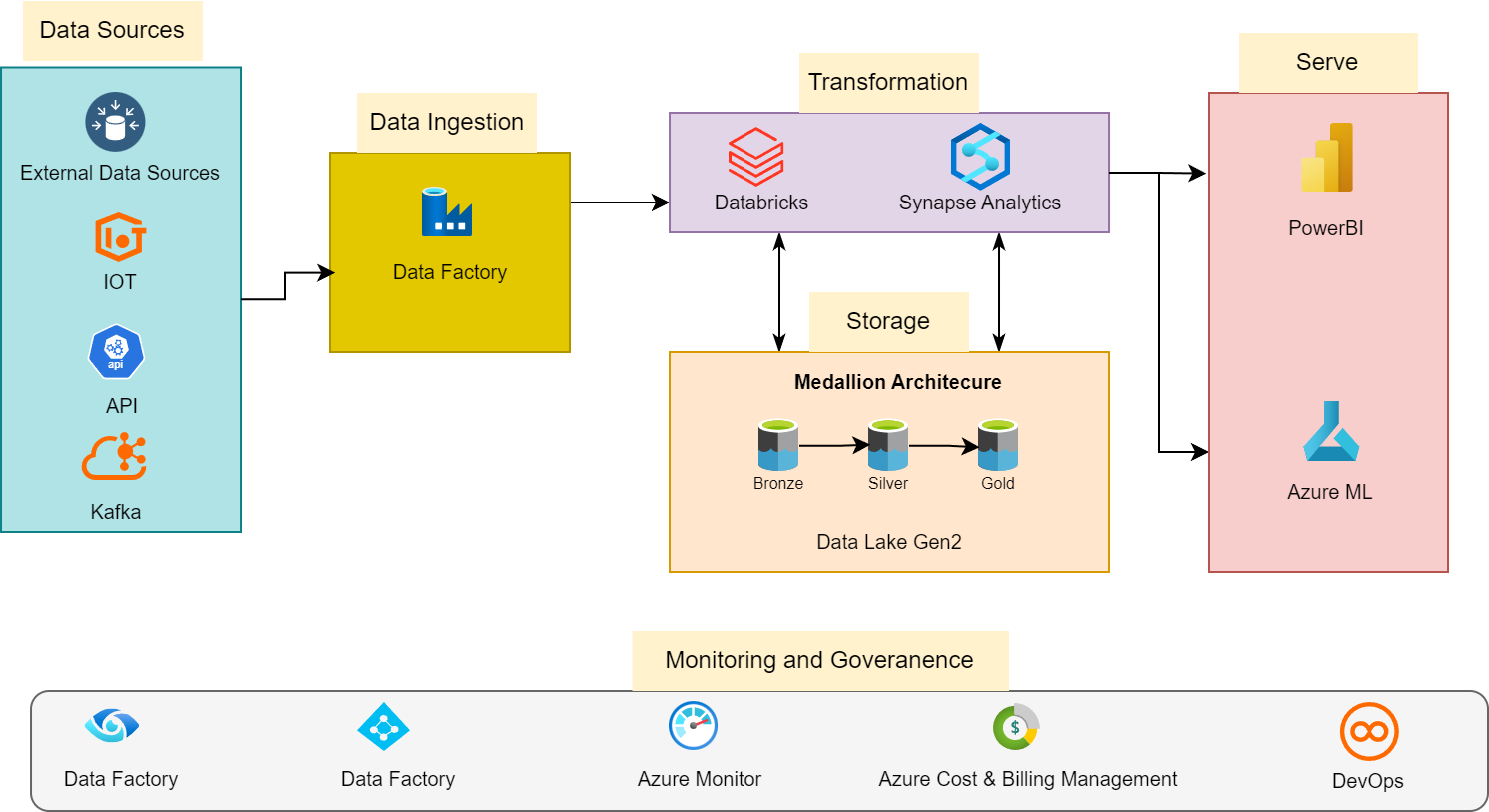From Data Chaos to Clarity: Implementing Effective Data Management Strategies in Modern Enterprises

In the energy sector, data is both a blessing and a challenge. As enterprises adopt IoT devices, advanced analytics, and external data integrations, the volume and complexity of data have grown exponentially. However, without a robust strategy, this abundance often results in data chaos—fragmented storage, inconsistent governance, and underutilized insights. This blog explores how modern enterprises can transition from chaos to clarity by leveraging Azure Data Analytics tools like Databricks and Data Lake, underpinned by strong data governance principles.
The Data Challenge in the Energy Sector
Modern energy enterprises face unique challenges when managing data:
- Volume and Variety: Data streams from IoT sensors on the grid, operational systems, and external market feeds create a deluge of structured and unstructured data.
- Siloed Systems: Legacy systems and disparate storage solutions lead to data silos, making it difficult to derive actionable insights.
- Regulatory Compliance: The energy sector operates in a highly regulated environment, requiring stringent data governance to meet compliance standards like GDPR and ISO 27001.
- Real-Time Needs: Decisions in energy trading, grid management, and predictive maintenance require real-time data processing.
Without a unified data strategy, these challenges lead to inefficiencies, increased operational risks, and missed opportunities for innovation.

The Solution: A Modern Data Architecture
To address these challenges, I designed and implemented a scalable, secure, and future-proof data architecture using Azure’s powerful analytics ecosystem. The architecture focuses on three key pillars: centralized storage, scalable processing, and robust governance.
Key Components of the Architecture
- Azure Data Lake: Serves as a centralized repository for ingesting structured and unstructured data from multiple sources. With its hierarchical namespace, it supports efficient data organization and retrieval.
- Azure Databricks: Provides a collaborative environment for data engineers and scientists to preprocess, analyze, and model data at scale. Its ability to handle large volumes of data makes it ideal for machine learning and advanced analytics.
- Azure Functions: Facilitates serverless ETL (Extract, Transform, Load) pipelines, enabling seamless data movement and transformation.
- Azure Active Directory (AAD): Ensures role-based access control and secure authentication, critical for maintaining data security and compliance.
- Azure DevOps: Supports CI/CD pipelines to automate deployment and ensure consistent updates to the data platform.
- Power BI: Enables business users to visualize data insights through intuitive dashboards.
This architecture enables enterprises to break down silos, enhance data accessibility, and derive actionable insights.
Data Governance: The Backbone of Success
Data governance is not just a compliance checkbox—it’s the foundation of a successful data strategy. A robust governance framework ensures:
- Data Quality: By implementing data validation and cleansing processes, enterprises can maintain accurate, consistent, and reliable data.
- Compliance: With tools like Azure Purview, enterprises can track data lineage, classify sensitive information, and ensure adherence to regulations like GDPR.
- Access Control: Role-based access and encryption prevent unauthorized access, protecting sensitive data.
- Monitoring and Auditing: Azure Monitor and Security Center provide real-time insights into data usage and security, enabling proactive issue resolution.
By integrating governance into every layer of the architecture, enterprises can foster trust and transparency in their data operations.
Business Impact: Turning Data into Value
The implementation of this architecture delivers tangible business benefits:
- Enhanced Decision-Making: Real-time analytics empower stakeholders to make data-driven decisions, whether it’s optimizing energy trading strategies or predicting equipment failures.
- Cost Optimization: Unified storage and processing reduce redundancies, streamline workflows, and lower operational costs.
- Scalability: The cloud-native architecture supports future growth, accommodating increasing data volumes and complexity.
- Faster Time-to-Insights: Automated ETL pipelines and collaborative analytics platforms accelerate the journey from raw data to actionable insights.
- Regulatory Confidence: With built-in governance and compliance tools, enterprises can confidently navigate audits and regulatory reviews.
A Real-World Example: Unlocking the Power of Data
One of the most impactful applications of this architecture was in optimizing energy grid operations. By integrating IoT sensor data with historical performance metrics, I developed predictive maintenance models that reduced downtime by 30%. Additionally, real-time analytics on energy consumption patterns enabled dynamic pricing strategies, improving profitability and customer satisfaction.
Why Azure?
Azure’s ecosystem offers unparalleled advantages for modern enterprises:
- Comprehensive Tools: From storage (Data Lake) to analytics (Databricks) and governance (Purview), Azure provides end-to-end solutions.
- Scalability: Azure’s cloud infrastructure allows enterprises to scale resources up or down based on demand.
- Security: With advanced encryption, role-based access, and compliance certifications, Azure ensures data integrity and confidentiality.
- Cost Efficiency: Pay-as-you-go pricing models enable enterprises to optimize costs without compromising performance.
Overcoming Challenges
While implementing this architecture, I encountered several challenges:
- Legacy System Integration: Migrating data from legacy systems required careful planning and execution to minimize downtime.
- Change Management: Training teams to adopt new tools and workflows was critical for success.
- Regulatory Complexity: Navigating multiple compliance requirements demanded a robust governance framework.
By addressing these challenges proactively, I ensured a smooth transition to the new architecture.
Conclusion: Ready to Transform Your Data Strategy?
The energy sector is undergoing a data revolution, and enterprises that harness their data effectively will lead the charge. Transitioning from data chaos to clarity is not just about technology—it’s about creating a culture of data-driven decision-making.
Are you ready to unlock the full potential of your data? Book a call with me today to explore how my consultancy services can help you design and implement cutting-edge data architectures tailored to your business needs. Let’s turn your data into a strategic asset.
